To install an Evenflo car seat, first position the seat in the desired location and tightly attach the seat belt. Adjust the harness to fit your child securely and double-check for any loose connections.
As a responsible parent or caregiver, it’s crucial to understand how to install a car seat correctly to ensure the safety of your child during travel. This step-by-step guide will help simplify the process and provide peace of mind when driving with your little one.
Just follow these easy instructions, and in no time, you’ll have your Evenflo car seat securely installed and ready for use.
Positioning The Car Seat In Your Vehicle
Ensuring the Correct Seat Orientation
Before installing your Evenflo car seat, it is important to ensure that you have the correct seat orientation. Depending on the age and weight of your child, the car seat can be positioned either rear-facing or forward-facing.
Positioning for Rear-Facing or Forward-Facing Installation
For infants and younger children, the safest position is rear-facing. This allows the car seat to absorb the impact of a collision and protect their vulnerable neck and back. As your child grows and reaches the weight and height limits specified by the car seat manufacturer, you can switch to forward-facing.
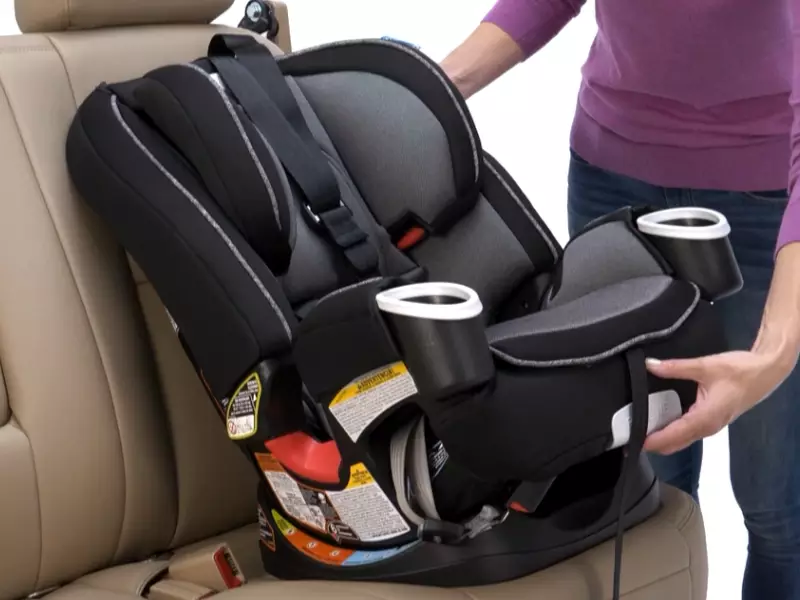
Choosing the Right Location in the Vehicle
When installing your Evenflo car seat, choosing the right location in your vehicle is crucial. Here are some considerations to keep in mind:
| Factors to consider | Tips |
|---|---|
| Vehicle manual | Refer to your vehicle manual to identify seating positions that are compatible with car seat installation. |
| Proximity to airbags | Avoid placing the car seat in a seating position with an active frontal airbag, as this can pose a safety risk. |
| Accessibility | Choose a location that allows easy access for buckling and unbuckling your child. |
| Stability | Ensure that the car seat is securely and tightly installed in your vehicle, with minimal movement when properly installed. |
| Visibility | Position the car seat in a location that allows you to have clear visibility of your child from the rearview mirror. |
Remember, proper positioning of your Evenflo car seat in your vehicle is essential for your child’s safety during travel. Make sure to follow the manufacturer’s instructions and consult your vehicle manual for specific information regarding car seat installation.
Securing The Car Seat With The Latch System
When it comes to installing a car seat, safety is of utmost importance. The LATCH (Lower Anchors and Tethers for Children) system is designed to make securing a car seat easier and more secure. In this section, we’ll guide you through the process of securing your Evenflo car seat using the LATCH system, ensuring that your little one travels safely and comfortably.
Understanding LATCH System Basics
Before we dive into the installation process, let’s quickly go over the basics of the LATCH system. The LATCH system consists of two lower anchors and one top tether anchor, which are built-in fixtures in most modern vehicles. These anchors are specifically designed to secure a car seat without the need for seat belts.
The lower anchors are typically located between the vehicle seat cushions, while the top tether anchor is commonly found on the rear shelf, floor, or seat back. By utilizing these anchors, you can ensure a tight and secure connection between the car seat and the vehicle, minimizing the risk of movement during sudden stops or accidents.
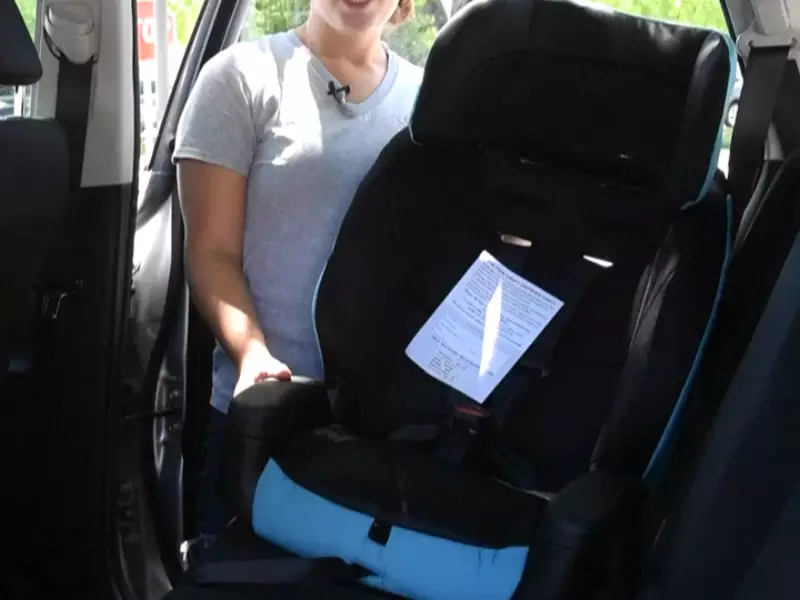
Locating the LATCH Anchors in Your Vehicle
In order to properly install your Evenflo car seat using the LATCH system, you first need to locate the LATCH anchors in your particular vehicle. The location of the anchors may vary depending on the make and model of your car, so it’s essential to consult your vehicle’s owner’s manual for specific instructions.
Typically, the lower anchors are indicated by small, round buttons or bars that are flush with the vehicle seat. These buttons or bars are often labeled with the letters “L” or “A” to indicate the presence of the lower anchors. The top tether anchor, on the other hand, can usually be identified by a metal loop or hook that is situated near the rear shelf, floor, or seat back.
Once you have identified the location of the LATCH anchors in your vehicle, you’re ready to move on to the installation process.
Installing the Car Seat Using the LATCH System
To install your Evenflo car seat using the LATCH system, follow these simple steps:
- Position the car seat in the desired rear-facing or forward-facing position.
- Locate the lower anchor connectors on the car seat. These connectors are usually found on the base of the car seat.
- Attach the lower anchor connectors to the lower anchors in your vehicle. Ensure that the connectors are securely latched.
- If your car seat has a top tether, locate the top tether strap on the car seat. This strap is typically found on the back of the car seat.
- Secure the top tether strap to the top tether anchor in your vehicle. Pull the strap tight to eliminate any slack.
- Test the installation by firmly grasping the car seat at the base and attempting to move it side to side or back and forth. The car seat should not move more than an inch in any direction.
By carefully following these steps, you can ensure that your Evenflo car seat is securely installed using the LATCH system. Remember to always double-check the tightness of the connections and consult the car seat’s user manual for any additional instructions or guidelines.
Installing your car seat may seem like a daunting task at first, but with the LATCH system and our step-by-step guide, you’ll be able to secure your little one’s car seat confidently and efficiently. Your child’s safety is our priority, and by utilizing the LATCH system, you can provide them with a secure and comfortable ride every time.
Installing The Car Seat With The Vehicle Seat Belt
Installing your Evenflo car seat using the vehicle seat belt is a simple and secure option. This method can be used when you don’t have access to a Lower Anchors and Tethers for Children (LATCH) system or if you prefer to use the seat belt to secure the car seat. In this section, we will walk you through the process of understanding the seat belt installation method, properly buckling and locking the seat belt, and securing the car seat tightly.
Understanding Seat Belt Installation Method
Before you begin the installation process, it’s important to understand the seat belt installation method. Make sure you carefully read the car seat’s instruction manual and consult your vehicle’s owner’s manual for specific information regarding seat belt installation. Different car seats may have specific requirements, so it’s crucial to follow the instructions provided.
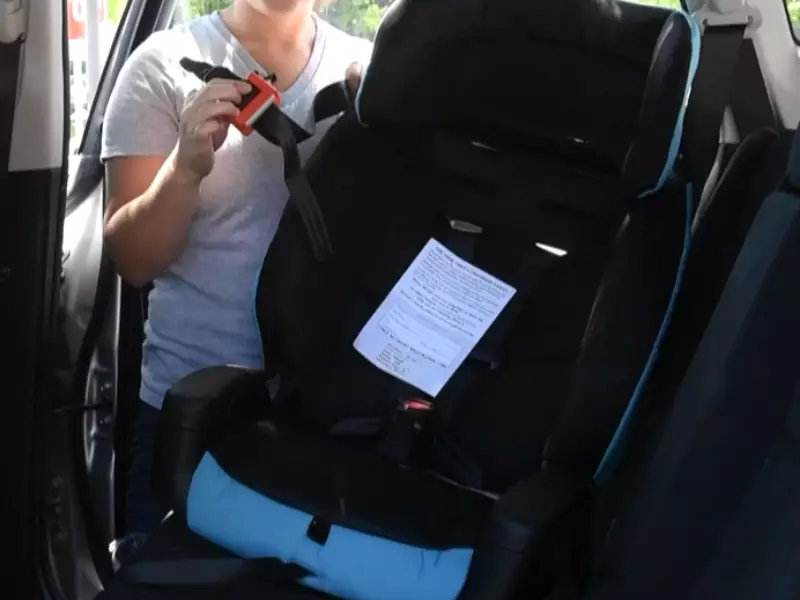
Properly Buckling and Locking the Seat Belt
Once you have familiarized yourself with the seat belt installation method, it’s time to buckle and lock the seat belt properly. Here are the steps to follow:
- Position the car seat in the desired seating location in your vehicle.
- Thread the vehicle seat belt through the designated belt path on the car seat.
- Make sure the seat belt lies flat and is not twisted.
- Insert the seat belt tongue into the buckle until it clicks.
- Pull the shoulder portion of the seat belt tight while pushing down on the car seat to remove any slack.
- Listen for a clicking sound, indicating that the seat belt is properly locked.
By properly buckling and locking the seat belt, you ensure that the car seat is securely anchored to the vehicle, providing maximum safety for your child.
Securing the Car Seat Tightly
Securing the car seat tightly is essential to minimize movement and potential injury during a collision. To ensure a tight and secure installation, follow these tips:
- Put your weight on the car seat and press it firmly into the vehicle seat while tightening the seat belt.
- Check for any excess movement by pulling on the car seat from different angles. It should not move more than one inch from side to side or front to back.
- Double-check that the seat belt remains properly buckled and locked.
Remember, a tightly secured car seat is crucial for your child’s safety during travel.
Installing your Evenflo car seat with the vehicle seat belt is a safe and reliable option when properly executed. Make sure to read the instruction manuals provided by both the car seat manufacturer and your vehicle manufacturer for specific guidelines and requirements. By understanding the seat belt installation method, properly buckling and locking the seat belt, and securing the car seat tightly, you can ensure a secure and safe ride for your child.
Adjusting The Car Seat Harness
One of the most important aspects of installing an Evenflo car seat is adjusting the car seat harness. The harness plays a crucial role in keeping your child safe and secure while traveling. In this section, we will discuss two key factors to consider when adjusting the harness: proper harness height and tension, and checking for proper harness fit. By following these steps, you can ensure that your child is properly secured and protected during every journey.
Proper Harness Height and Tension
Before installing the Evenflo car seat, it’s crucial to adjust the harness height and tension to ensure a proper fit for your child. The harness should be positioned at or just below your child’s shoulders when rear-facing, and at or just above the shoulders when forward-facing. This allows for optimal support and protection.
To adjust the harness height, locate the harness adjuster strap, usually located at the back of the car seat. Loosen the strap by pulling on it gently, and then adjust the harness straps to the appropriate height position. Once you’ve made the adjustment, pull the harness tight to remove any slack, making sure the straps lie flat and smoothly on your child’s body.
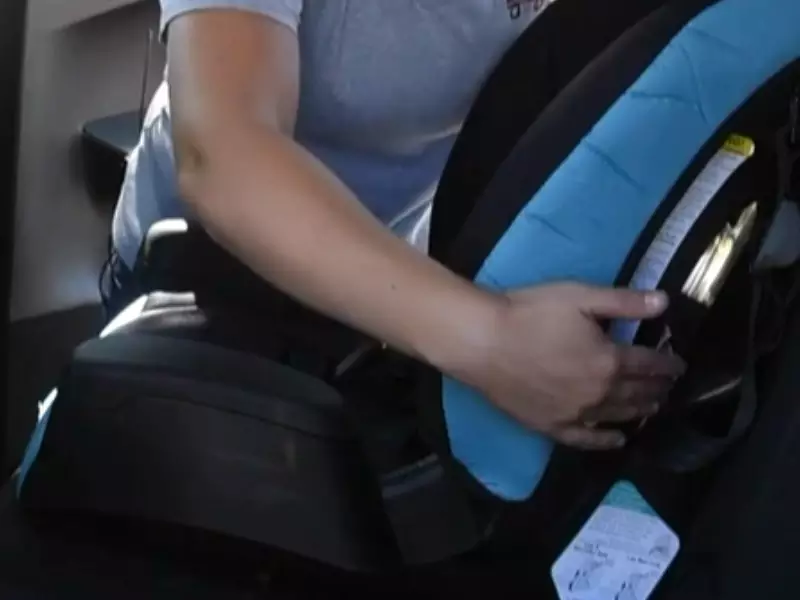
Checking for Proper Harness Fit
Ensuring that the harness is properly fitted to your child’s body is essential for their safety. To check for proper harness fit, follow these simple steps:
- Buckle your child into the car seat and tighten the harness straps until they are snug.
- Check that the harness straps lie flat and are not twisted.
- Ensure that the chest clip is positioned at armpit level and is properly secured.
- Perform the “pinch test” by trying to pinch the harness straps at your child’s shoulder. If you can pinch any excess webbing, tighten the harness until it’s snug and retest.
| Check | Result |
|---|---|
| The harness straps lie flat and are not twisted | ✓ |
| The chest clip is positioned at armpit level and secured | ✓ |
| No excess webbing can be pinched at the shoulders | ✓ |
By following these guidelines and checking for proper harness fit, you can ensure that your child is securely fastened in their Evenflo car seat. Remember to regularly inspect and adjust the harness as your child grows to maintain a safe and comfortable fit.
Verifying The Correct Installation
When it comes to the safety of your little one while traveling, ensuring that your Evenflo car seat is installed correctly is of utmost importance. Verifying the correct installation is a crucial step in providing a secure and safe environment for your child. In this section, we will discuss two important tests that you can perform to ensure that the car seat is securely installed: the Inch Test and the Tug Test.
Performing the Inch Test
The Inch Test is a simple yet effective way to determine if your Evenflo car seat is securely installed. To perform this test, follow these steps:
- Place one hand at the base of the car seat.
- With your other hand, firmly hold the car seat near the highest point of the seat.
- Tilt and move the seat side to side and back and forth, applying moderate force.
- While performing these movements, observe the movement of the car seat.
If the car seat moves more than one inch in any direction, it is not securely installed. In such cases, you will need to readjust the installation until the car seat remains firmly in place.
Tug Test
In addition to the Inch Test, the Tug Test is another important method to ensure that your Evenflo car seat is properly installed. This test involves providing a firm tug to the car seat to assess its stability.
Here’s how you can perform the Tug Test:
- First, ensure that the car seat’s harness system is properly secured and adjusted according to the manufacturer’s instructions.
- Position yourself behind the car seat and firmly grasp the seat near the belt path.
- Apply a strong forward force, trying to pull the car seat away from the vehicle seat.
- Observe the movement of the car seat. It should not move more than one inch in any direction.
If the car seat moves excessively or detaches from the vehicle seat during the Tug Test, it indicates an incorrect installation. In such cases, refer to the Evenflo car seat’s user manual or seek professional help to ensure proper installation.
By performing both the Inch Test and the Tug Test, you can have peace of mind knowing that your Evenflo car seat is securely installed and ready to provide maximum protection for your little one during your travels.
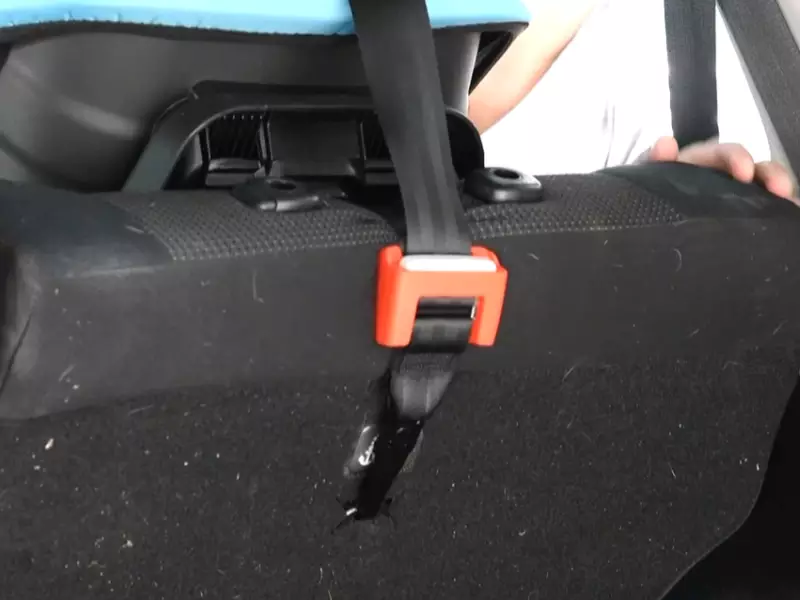
Dealing With Common Installation Challenges
Installing a car seat can sometimes be a daunting task, especially if you encounter common installation challenges along the way. However, with the right approach, you can overcome these obstacles and ensure the safety of your child while traveling. In this section, we will discuss some of the common installation difficulties you may face and provide solutions to help you overcome them.
Overcoming Installation Difficulties
While installing an Evenflo car seat, you may come across a few challenges. Here are some of the common difficulties you might encounter and how to overcome them:
1. Tightening the Seatbelt:
One common challenge is correctly tightening the seatbelt around the car seat. A loose seatbelt can compromise the safety of the installation. To tackle this issue:
- Ensure the seatbelt is threaded through the correct path according to the car seat’s manual.
- Apply weight and pressure to the car seat while pulling the seatbelt tight to remove any slack.
- Verify that the seatbelt is securely locked in place.
2. LATCH System Troubleshooting:
The LATCH (Lower Anchors and Tethers for Children) system is designed to make car seat installation easier. However, it can pose challenges if not properly utilized. Here’s how to troubleshoot common LATCH system issues:
- Check that the LATCH connectors are properly attached to the designated anchors in your car.
- Ensure the connectors are secure and free from any twists.
- If the LATCH system is not compatible with your car or the weight of your child exceeds the LATCH weight limit, use the seatbelt installation method instead.
3. Angle Adjustment:
Proper angle adjustment is crucial for the safety and comfort of your child. If you find it challenging to achieve the correct recline angle, follow these steps:
- Consult the car seat’s manual to determine the correct angle range for your child’s age and weight.
- Use rolled-up towels or a pool noodle to achieve the desired recline angle.
- Double-check the angle using the built-in level indicator provided with the car seat.
Seeking Professional Assistance if Needed
While overcoming common installation challenges is possible on your own, there may be instances where seeking professional assistance is necessary. If you find yourself struggling with any aspect of installing your Evenflo car seat, it is always better to reach out to a qualified car seat installation technician. They have the expertise and experience to ensure your car seat is installed correctly, providing the utmost safety for your child during travel.
Frequently Asked Questions For How To Install An Evenflo Car Seat
How Do You Install An Evenflo Infant Car Seat?
To install an Evenflo infant car seat, follow these steps: 1. Position the base in the back seat. 2. Thread the vehicle’s seatbelt through the base. 3. Tighten the seatbelt. 4. Attach the car seat to the base. 5. Check for secure installation.
Always refer to the instruction manual for detailed guidance.
How Do You Install An Evenflo Rear Facing Car Seat?
To install an Evenflo rear facing car seat, follow these steps:
1. Position the seat in the back seat of your vehicle.
2. Secure the base using the seat belt or LATCH system.
3. Adjust the recline angle to ensure the seat is level.
4. Attach the car seat to the base.
5. Secure your child in the car seat using the harness straps.
How Do You Install An Evenflo Car Seat Forward Facing?
To install an Evenflo car seat forward facing, follow these steps:
1. Secure the base of the car seat tightly to the vehicle seat using the seat belt.
2. Make sure the car seat is reclined according to the manufacturer’s instructions.
3. Thread the seat belt or latch belt through the appropriate slots in the car seat while ensuring it is snug.
4. Fasten the seat belt or latch belt securely.
5. Check the car seat for proper installation by giving it a firm tug at the base and along the belt path.
How Do You Put A Seatbelt On An Evenflo Car Seat?
To put a seatbelt on an Evenflo car seat, simply thread the seatbelt through the designated belt path on the car seat. Ensure the seatbelt is securely buckled and properly tightened. Follow the car seat manual’s instructions for a safe and secure installation.
Conclusion
Installing an Evenflo car seat is a crucial step in ensuring your child’s safety during car rides. By following these simple instructions and using proper techniques, you can easily install the car seat without any hassle. Remember to always refer to the car seat’s manual for specific instructions and guidelines.
With the right knowledge and careful installation, you can travel with peace of mind knowing that your child is secure and protected in their car seat.
